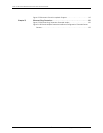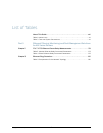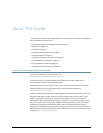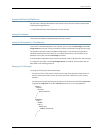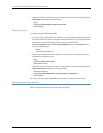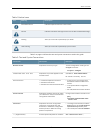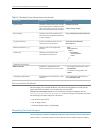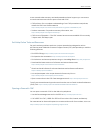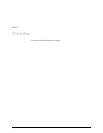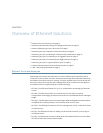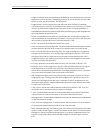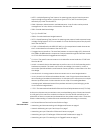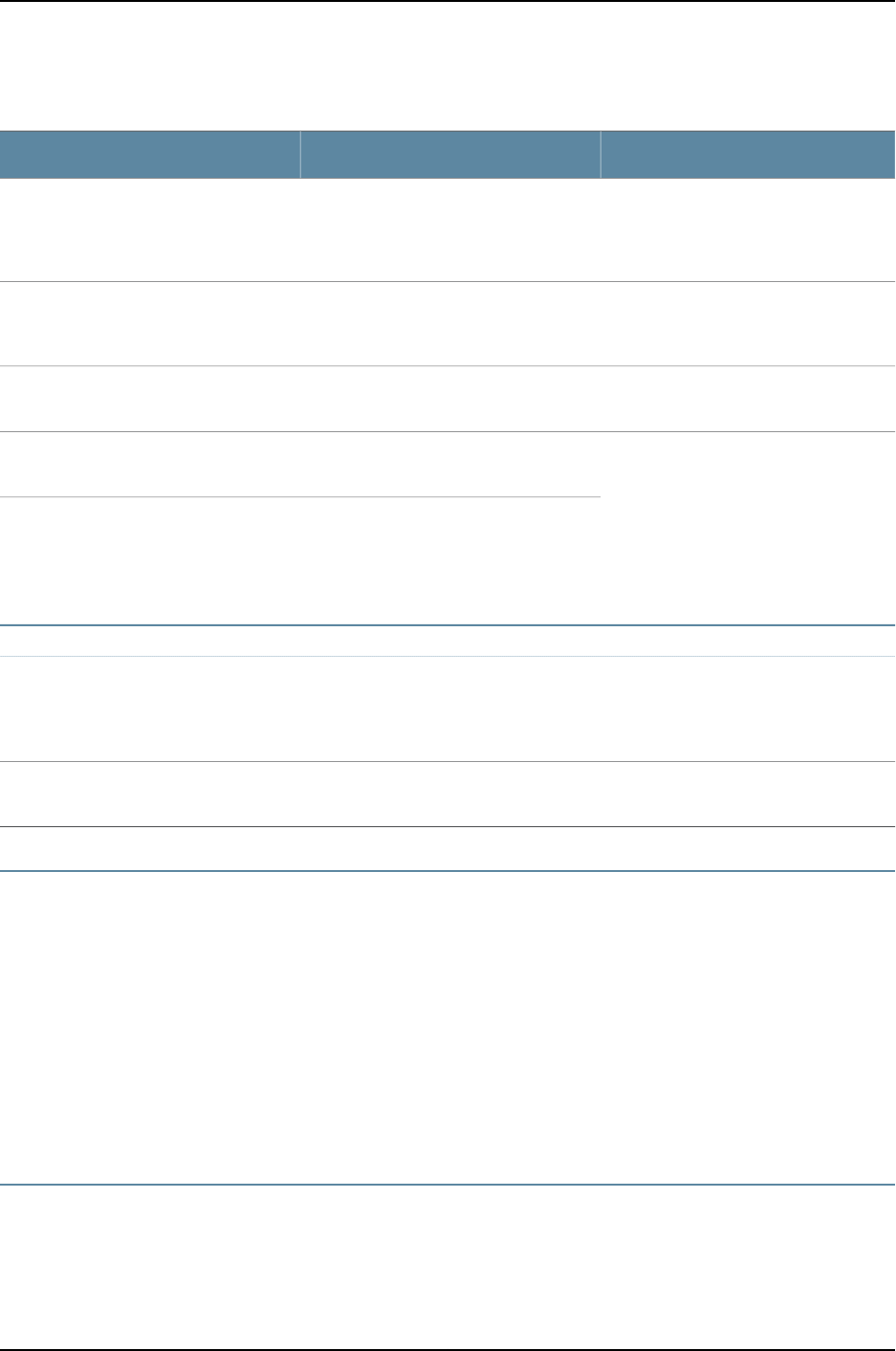
Table 2: Text and Syntax Conventions (continued)
ExamplesDescriptionConvention
broadcast | multicast
(string1 |string2 | string3)
Indicates achoice between themutually
exclusivekeywordsor variables oneither
side of the symbol. The set of choices is
oftenenclosedin parentheses for clarity.
| (pipe symbol)
rsvp{ # Required for dynamic MPLSonlyIndicates a comment specified on the
samelineastheconfigurationstatement
to which it applies.
# (pound sign)
communityname members [
community-ids]
Enclose a variable for which you can
substitute one or more values.
[ ] (square brackets)
[edit]
routing-options {
static {
route default {
nexthop address;
retain;
}
}
}
Identify a level in the configuration
hierarchy.
Indention and braces ( { } )
Identifies a leaf statement at a
configuration hierarchy level.
; (semicolon)
J-Web GUI Conventions
•
In the Logical Interfaces box, select
All Interfaces.
•
To cancel the configuration, click
Cancel.
Represents J-Web graphical user
interface (GUI) items you click or select.
Bold text like this
In the configuration editor hierarchy,
select Protocols>Ospf.
Separates levels in a hierarchy of J-Web
selections.
> (bold right angle bracket)
Documentation Feedback
We encourage you to provide feedback, comments, and suggestions so that we can
improve the documentation. You can send your comments to
techpubs-comments@juniper.net, or fill out the documentation feedback form at
https://www.juniper.net/cgi-bin/docbugreport/. If you are using e-mail, be sure to include
the following information with your comments:
•
Document or topic name
•
URL or page number
•
Software release version (if applicable)
Requesting Technical Support
Technicalproductsupport isavailablethroughthe JuniperNetworks TechnicalAssistance
Center (JTAC). If you are a customer with an active J-Care or JNASC support contract,
Copyright © 2010, Juniper Networks, Inc.xxii
Junos 10.4 MX Series Ethernet Services Routers Solutions Guide



